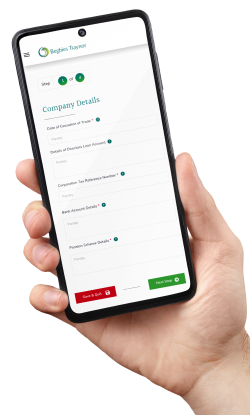Compulsory and voluntary insolvent liquidation procedures result in a company being closed down following the sale of assets, but there are background differences between the two procedures that can affect all parties involved.
There can be severe consequences for directors following liquidation, depending on how their creditors have been treated – essentially, whether directors have taken steps to minimise their creditors’ losses.
So what does this mean in practice, how do the two processes work, and what should directors do if their company needs to be liquidated?
Concerned about the National Insurance increase?
For the 2024-25 tax year, the rate of employer National Insurance increases from 13.8% to 15% adding yet more pressure onto already squeezed cash flows. If you are worried about the impact this could have on your company’s finances, talk to the experts at UK Liquidators. As licensed insolvency practitioners we can explain your options and help you plot a way forward. Call today on 0800 063 9262.
How does compulsory liquidation work?
If a creditor is owed £750 or more they can seek to forcibly close the company down via a winding up petition. Once a petition is filed at court there is limited time for the company to act as severe restrictions come into play very quickly.
The petition is advertised publicly in The Gazette, and when the bank discovers the company’s situation they will freeze all accounts. Clearly, this limits the company’s ability to operate, as from this point on, transactions can only be made with authority from the court.
The Official Receiver (OR) or a licensed insolvency practitioner (IP) conducts the liquidation process by selling assets and repaying creditors where possible. The underlying issue for directors, however, is the fact that they haven’t taken the initiative to minimise creditor losses.
Investigations into director conduct following compulsory liquidation
This leads to a comprehensive investigation by the Insolvency Service into director conduct, to find out why the company entered insolvency. The ramifications for directors can be serious, potentially including:
Although it seems desirable to wait for a creditor to wind a company up, as there are no professional fees to pay, the cost to directors on a personal level can be high. So what does the alternative procedure offer, and how are directors affected?
Liquidation Portal
For Company Directors

Why choose a Creditors’ Voluntary Liquidation?
Directors can place their own company into Creditors’ Voluntary Liquidation rather than waiting for a creditor to wind it up. Although the end result isn’t ideal for any business, deciding to place an insolvent company into liquidation offers benefits for the directors.
Principally, it enables directors to fulfil their statutory obligations with regard to creditors – prioritising their interests and reducing their overall financial losses. The alternative of continuing to trade, breaches insolvency laws and can result in serious consequences.
So how does a CVL work?
The CVL process
Creditors’ Voluntary Liquidation requires the appointment of a licensed insolvency practitioner to administer the process and ultimately distribute any funds from the sale of assets to creditors.
There is no involvement by the Official Receiver or the courts when a CVL is used. The appointed IP gathers information about the company’s assets and liabilities, deals with any outstanding contracts, and sells assets for the benefit of creditors.
The liquidator is obliged to undertake an investigation into the circumstances of the company’s decline, but as directors have put their creditors’ first, this is less intense than during a compulsory liquidation process.
Start your online liquidation today
If you have decided liquidation is the right option for your limited company, you can take the first step and begin the process online using our online portal. Starting the process is quick, simple, and can be done at a time that suits you. Your information will be submitted to your local UK Liquidators insolvency practitioner who will be with you every step of the way. Click here to start your company’s liquidation online.
The main difference between the two processes is how they’re started, and it’s always better for directors to take the initiative in cases where liquidation is inevitable. Not only does this safeguard company creditors, it also offers some protection for directors against wrongful trading accusations and personal liability.
Some directors might rule out this route because of the professional fees involved, but there’s a possibility of claiming redundancy pay if directors have also worked as employees of the company.
This can represent a considerable sum in some cases, and could be used to pay for the liquidation procedure whilst also avoiding serious allegations of failing to place creditor interests first.
If you would like further information on compulsory liquidation and Creditors’ Voluntary Liquidation, please contact our expert team at UK Liquidators. We work from a nationwide network of offices and offer same-day consultations so we can quickly provide the reliable, independent advice you need.
By completing the test, you will receive:
If you are considering liquidation for your company, taking expert advice at an early stage is crucial. At UK Liquidators, our team of licensed insolvency practitioners are committed to providing limited company directors with the help and advice they need to make an informed decision.




Looking for immediate support?
Complete the below to get in touch